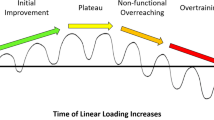Abstract
Muscle strength is often measured through the performance of a one-repetition maximum (1RM). However, we that feel a true measurement of ‘strength’ remains elusive. For example, low-load alternatives to traditional resistance training result in muscle hypertrophic changes similar to those resulting from traditional high-load resistance training, with less robust changes observed with maximal strength measured by the 1RM. However, when strength is measured using a test to which both groups are ‘naive’, differences in strength become less apparent. We suggest that the 1RM is a specific skill, which will improve most when training incorporates its practice or when a lift is completed at a near-maximal load. Thus, if we only recognize increases in the 1RM as indicative of strength, we will overlook many effective and diverse alternatives to traditional high-load resistance training. We wish to suggest that multiple measurements of strength assessment be utilized in order to capture a more complete picture of the adaptation to resistance training.
Similar content being viewed by others
References
Mitchell CJ, Churchward-Venne TA, West DW, et al. Resistance exercise load does not determine training-mediated hypertrophic gains in young men. J Appl Physiol. 2012;113(1):71–7.
Martin-Hernandez J, Marin PJ, Menendez H, et al. Muscular adaptations after two different volumes of blood flow-restricted training. Scand J Med Sci Sports. 2013;23(2):e114–20.
Ogasawara R, Loenneke JP, Thiebaud RS, et al. Low-load bench press training to fatigue results in muscle hypertrophy similar to high-load bench press training. Int J Clin Med. 2013;4(02):114.
Ward J, Fisk GH. The difference in response of the quadriceps and the biceps brachii muscles to isometric and isotonic exercise. Arch Phys Med Rehabil. 1964;45:614–20.
Ozaki H, Loenneke JP, Buckner SL, et al. Muscle growth across a variety of exercise modalities and intensities: contributions of mechanical and metabolic stimuli. Med Hypotheses. 2016;88:22–6.
Garber CE, Blissmer B, Deschenes MR, et al. American College of Sports Medicine position stand. Quantity and quality of exercise for developing and maintaining cardiorespiratory, musculoskeletal, and neuromotor fitness in apparently healthy adults: guidance for prescribing exercise. Med Sci Sports Exerc. 2011;43(7):1334–59.
Essentials of strength training and conditioning: National Strength and Conditioning Association. Baechle TR, Earle RW, editors. Champaign: Human Kinetics, 3rd edition; 2008. p. 401.
Campos GE, Luecke TJ, Wendeln HK, et al. Muscular adaptations in response to three different resistance-training regimens: specificity of repetition maximum training zones. Eur J Appl Physiol. 2002;88(1–2):50–60.
Stone MH, O’Bryant H, Garhammer J, et al. A theoretical model of strength training. Strength Cond J. 1982;4(4):36–9.
Ahtiainen JP, Walker S, Peltonen H, et al. Heterogeneity in resistance training-induced muscle strength and mass responses in men and women of different ages. Age (Dordr). 2016;38(1):1–13.
Bernardi M, Solomonow M, Nguyen G, et al. Motor unit recruitment strategy changes with skill acquisition. Eur J Appl Physiol Occup Physiol. 1996;74(1–2):52–9.
Morton RW, Oikawa SY, Wavell CG, et al. Neither load nor systemic hormones determine resistance training-mediated hypertrophy or strength gains in resistance-trained young men. J Appl Physiol. 2016. doi:10.1152/japplphysiol.00154.2016 (Epub 12 May 2016).
Loenneke JP, Thiebaud RS, Abe T. Does blood flow restriction result in skeletal muscle damage? A critical review of available evidence. Scand J Med Sci Sports. 2014;24(6):e415–22.
Churchward-Venne TA, Tieland M, Verdijk LB, et al. There are no nonresponders to resistance-type exercise training in older men and women. J Am Med Dir Assoc. 2015;16(5):400–11.
Author information
Authors and Affiliations
Corresponding author
Ethics declarations
Funding
No external sources of funding were used in the preparation of this article.
Conflict of interest
Samuel Buckner, Matthew Jessee, Kevin Mattocks, Grant Mouser, Brittany Counts, Scott Dankel and Jeremy Loenneke declare that they have no conflicts of interest that are relevant to the content of this article.
Rights and permissions
About this article
Cite this article
Buckner, S.L., Jessee, M.B., Mattocks, K.T. et al. Determining Strength: A Case for Multiple Methods of Measurement. Sports Med 47, 193–195 (2017). https://doi.org/10.1007/s40279-016-0580-3
Published:
Issue Date:
DOI: https://doi.org/10.1007/s40279-016-0580-3




